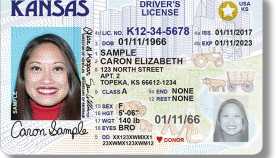AARP Eye Center
Rightsizing: A Multigenerational Housing Strategy
By Stephanie K. Firestone, February 25, 2019 09:23 AM

Note: This blog is part of the series, Importing Age-Friendly Innovations, which analyzes trends and explores age-friendly policy and programmatic innovations in other countries that may be adaptable to the US context. Additional posts explore multigenerational living and intergenerational housing.
Empty nesters in the US increasingly talk about “downsizing.” Perhaps a more appropriate frame is “rightsizing,” which the American author Ciji Ware used in her 2007 book—illuminating the need for a change “when your old life just doesn’t fit anymore.” The term is used more widely in other parts of the world, and the distinction is subtle yet significant.
The concept of rightsizing provides a more holistic frame for the kind of home that is appropriate for a particular individual or family at a particular point in time. In many cases the appropriate home will be smaller than the one currently occupied, à la downsizing. Yet in other cases it may be larger, such as when multiple generations in a family seek to live together. Multigenerational living, in fact, is on the rise in the US—up from 12 percent in the 1980s to 20 percent in 2016.
Another rightsize option may entail the addition of a secondary living unit on the site of an existing house. Known as accessory dwelling units (ADUs), these living spaces can be detached, such as a cottage in the backyard of a single family home, or attached—for example, living space above a garage, in an attic or in a basement. A recent episode of the Today Show illustrated the importance of rightsizing as family needs change. The featured family added an ADU so their young adult son could afford to remain in a city with a very tight housing market; they reasoned that once he married, they would move into the ADU and be close to the grandchildren they hoped would follow.
Fostering Conscious Choice by Fostering Rightsizing
A recent report out of the United Kingdom indicated that a significant minority of older people there moved after saying they would prefer to stay in their current home. The implication: many moves made by older people are not intentional “rightsizing” decisions but forced or crisis moves.
To escape this cycle, some countries are incentivizing rightsizing. In the UK, the Birmingham Municipal Housing Trust (BMHT) is experimenting with the construction of two-bedroom bungalows. BMHT promotes their uptake by encouraging older households through the Wise Move program, which helps them reconnect utilities, install mobility aids, organize move logistics, and even apply for financial assistance for new appliances and other move-related expenses.
In Singapore, the Silver Housing Bonus gives seniors up to a $20,000 cash bonus for rightsizing from a larger apartment to a smaller one. Singapore also offers flexibility in apartment design as well as financing and lease options. The two-room “flexi-flat” is designed for retired couples and has a short-lease option (15-45 years vs. the standard 99-year lease), which enables older adults to add funds to their retirement accounts. Also helping seniors to rightsize, deferred down payment offerings and temporary loan schemes enable them to have the upfront funds needed for the new apartment before the sale of a previous property.
A Mix of Housing Options
As the above examples illustrate, key to enabling rightsizing is the existence of a variety of housing options in communities. The comprehensive housing strategy in Vancouver, Canada seeks to ensure the city has the full range of both housing types and affordability options. The Making Room Housing Program employs zoning changes and an easing of regulations to promote a greater mix of housing types. City planners have also amended zoning regulations to allow duplexes in most single-family home zoning districts.
Vancouver has also updated regulations for a variety of ADUs, including lock-off units, secondary suites and laneway houses. Like Eskimos having multiple words for slight variations in types of snow, ADUs have become so mainstream in Vancouver that a vast lexicon continues to emerge. In July, Vancouver updated its laneway housing regulations to make them easier to build by granting outright instead of conditional approval. Planners also added new regulations that make it easier to make infill additions or to convert designated “character homes” to multiple dwelling units. The city also plans to develop recommendations to enable additional much-needed “missing middle housing” forms—that is, a range of multi-unit or clustered housing types compatible in scale with single-family homes that help meet the growing demand for walkable urban living, such as 3-/4-story apartments, fourplexes and townhouses.
The UK report posits that the ability to rightsize is dependent on both the availability and the accessibility of housing options that people feel would improve their quality of life. A recent AARP survey indicates that nearly 80% of adults 50 and over want to remain in their homes OR communities as they age, and other countries report similar desires. A “rightsizing” frame can help decision-makers to make the “community” part of this equation a real option.

Stephanie Firestone is a senior strategic policy adviser with AARP International. She is an urban planner who has advanced livability and sustainability in the US and globally.































































